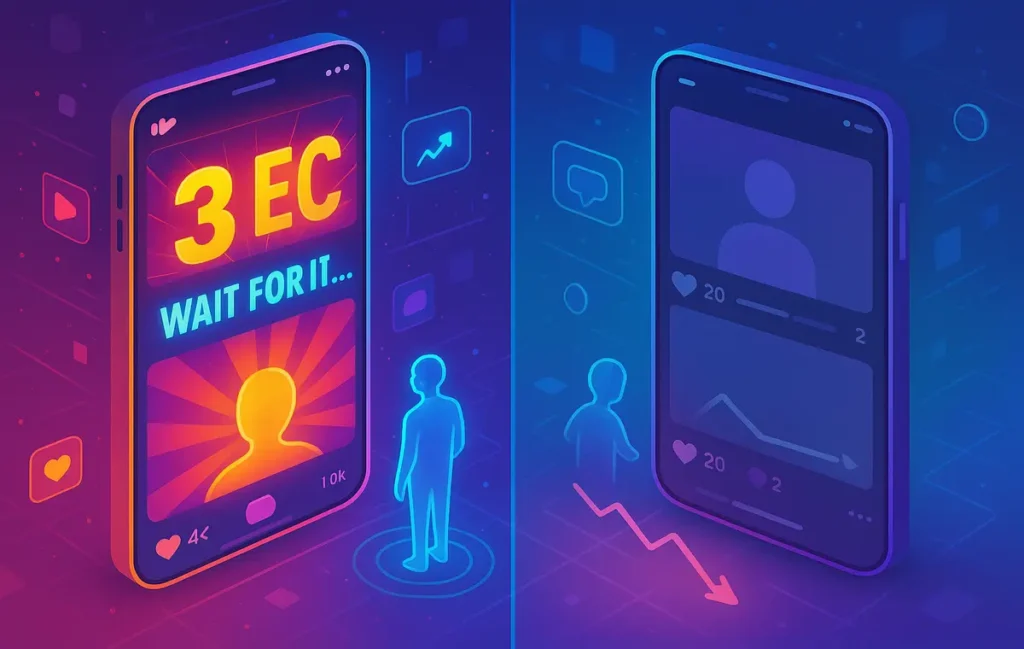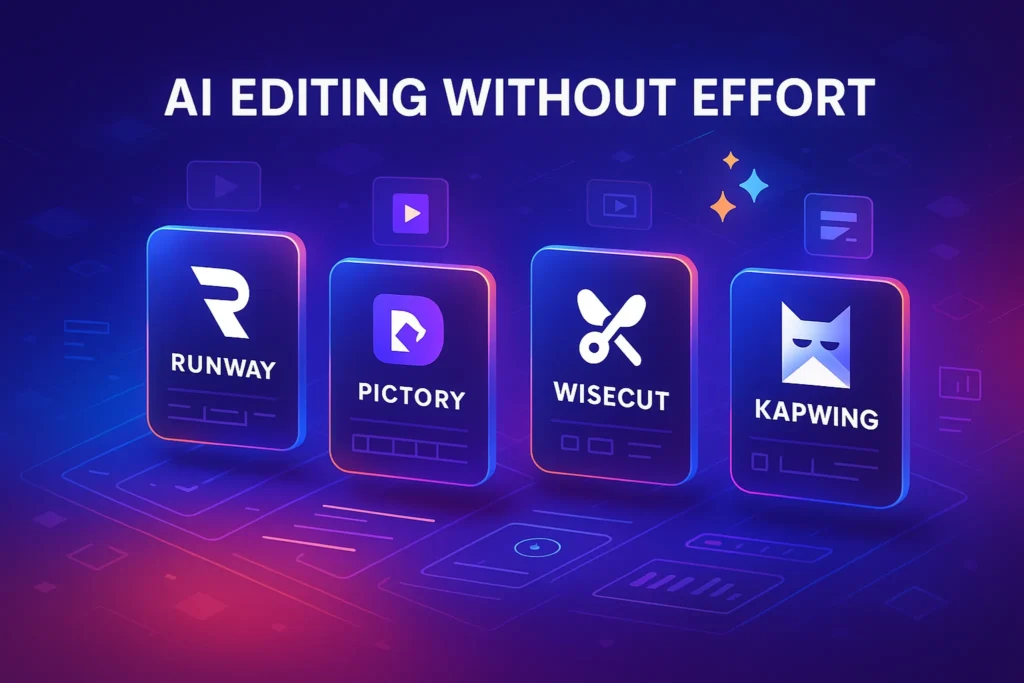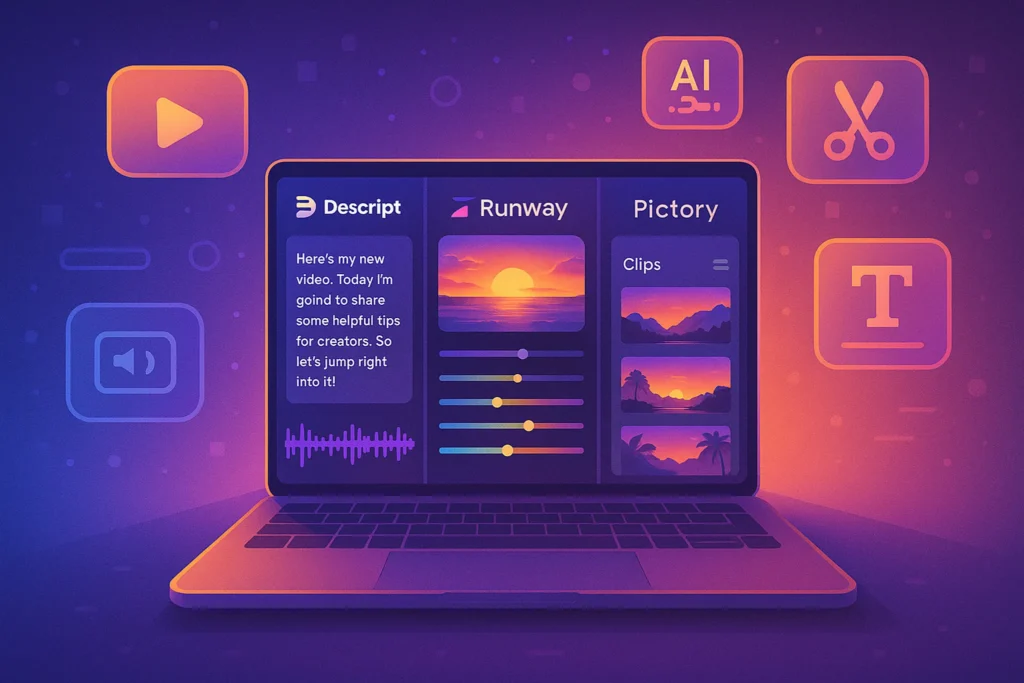🎯 Intro
Scroll, scroll, scroll—stop. That single pause is the battle every short-form creator fights. Studies show that the first eight seconds of a video decide whether viewers stay or swipe away. For platforms like TikTok, Instagram Reels, and YouTube Shorts, where millions of videos compete for eyeballs, winning those first few seconds is survival.
And that’s where hook architecture comes in. Hooks aren’t just flashy intros; they are the structural elements that command attention and signal to the algorithm that your content deserves to be shown. Without a compelling hook, even the most polished video or clever edit will drown in the endless feed.
At NerdChips, we believe creators don’t need to reinvent the wheel each time. Instead, by mastering five hook templates, you can reliably build videos that keep viewers engaged and algorithms satisfied.
🔍 Why Hook Architecture Matters in Short-Form Video
Platforms reward one metric above all: watch time and retention. TikTok’s algorithm, for instance, measures how many people finish your video. The more viewers stick around, the more reach you get. That means the hook is not just about catching attention—it’s about making a silent promise: “This is worth your time.”
Creators often underestimate this. They focus on editing flair, music choice, or captions, but without a strong hook in the first 3 seconds, users never see those elements. In fact, TikTok data shows that videos with hooks in the first 3 seconds get up to 1.5x higher retention rates than those that delay their payoff.
Hooks also influence click-through rates (CTR) on profile visits and follow conversions. By setting the right expectation up front, you position viewers to engage further with your content. That’s why hook architecture is not just a creative decision—it’s a growth strategy.
💡 Nerd Tip: Every hook should appear within the first 3 seconds, not after your intro or branding splash.
🧩 5 Hook Templates That Work
🎯 The Bold Statement
Humans love strong opinions. Starting with a bold or surprising statement snaps the viewer out of autopilot. For example: “90% of people are editing YouTube videos the wrong way.” That kind of line immediately challenges assumptions.
Creators use this template effectively in niches like tech reviews and productivity. As highlighted in Best AI Video Editing Tools Reviewed, bold claims about editing software grab attention, then lead into valuable breakdowns. The key is authenticity—don’t make a claim you can’t back up.
❓ The Intriguing Question
Nothing pulls viewers in like curiosity. An unanswered question forces the brain to stick around. For instance: “What happens if you stop using captions on your Shorts?”
This works especially well in educational and how-to content. By asking a relevant, open-ended question, you set up a journey the viewer wants to follow. Pair this with Best AI Writing Assistants for YouTube Scripts to craft sharp, curiosity-driven lines that fuel engagement.
⚡ The Visual Shock
Sometimes words aren’t enough. A bizarre prop, an extreme close-up, or a jump cut to something unexpected can jolt viewers into watching longer. Imagine opening with a spilled cup of coffee over your editing laptop—it’s relatable, but visually shocking.
Creators who excel at comedy and lifestyle content often rely on visual shock hooks. When combined with effects from tools covered in Best AI Editing Tools for YouTube Creators, this method becomes a high-retention powerhouse.
💔 The Relatable Pain Point
“Ever spend 4 hours editing only to hate the final cut?” A line like this taps into shared frustration. Viewers stay because they feel understood—and want to see your solution.
This template is ideal for niches like productivity, creator economy, and tutorials. When discussing How to Edit Videos Like a Pro on a Budget, for example, framing the video with a pain point instantly builds empathy with struggling creators.
🎁 The Fast Value Drop
In short-form, people want value fast. A hook like “Here are 3 shortcuts to automate YouTube editing in under 10 seconds” delivers an instant promise of results.
This is one of the most algorithm-friendly hooks. You’re signaling efficiency and actionable insights. Pair it with automation tips like those in How to Automate YouTube Video Editing, and you give audiences a reason to trust and follow.
💡 Nerd Tip: A hook isn’t clickbait if you deliver on the promise. The Fast Value Drop works best when payoff is immediate.
📈 Real ROI of Hook Optimization
Optimizing hooks isn’t just a creative exercise—it has direct ROI. Videos with strong hooks average 25–35% higher retention, according to platform case studies. That retention boost translates into more views, more followers, and higher engagement.
Creators who tested bold vs. weak hooks in A/B experiments found that CTR on profile visits increased by 18%. And when watch time goes up, algorithms boost reach without you spending a cent.
Even monetization benefits. Strong hooks lead to higher completion rates, which increase ad impressions on YouTube Shorts and improve conversion rates when you place CTAs at the end. For brands and solo creators alike, hook architecture is a revenue driver, not just an artistic choice.
🚀 Implementation Guide
Step 1: Select the Right Hook Template. Choose based on your niche and audience. For example, educational creators often thrive with Intriguing Questions, while lifestyle creators lean into Visual Shocks.
Step 2: Run A/B Tests. Upload two versions of a video with different hooks and compare retention. Platforms like YouTube provide analytics that make this simple.
Step 3: Use AI Tools for Speed. Leverage script generators and AI editing tools (see Best AI Video Editing Tools Reviewed) to brainstorm and create multiple hook variations in minutes.
Step 4: Analyze Data. Look at retention graphs. Where do viewers drop off? Adjust accordingly.
Step 5: Repeat and Scale. Hook architecture is a skill that compounds. The more you test, the sharper your instinct becomes.
💡 Nerd Tip: Track performance at the 3-second, 8-second, and 15-second marks. These are the key checkpoints where viewers decide to stay or leave.
⚠️ Challenges & Solutions
One common challenge is repetition fatigue. Viewers notice if every video starts with the same style of hook. The solution is to rotate templates—switch from questions to visuals to keep your content fresh.
Another challenge is brand voice alignment. Bold statements may work in comedy, but feel jarring in finance or wellness niches. The fix: adapt templates to your brand tone.
Finally, producing high-quality visuals can be difficult for solo creators. AI-based captioning, templates, and editing software help bridge this gap, as discussed in Best AI Editing Tools for YouTube Creators.
⚡ Upgrade Your Hook Game
Want to test bold statements, shock visuals, or value-drop hooks without hours of editing? Explore AI-driven script writers, caption generators, and video editors to scale your creativity faster.
🧠 Cognitive Psychology of Hooks
Why do the first three seconds matter so much? Cognitive psychology explains it clearly. Our brain is constantly filtering information, deciding within milliseconds what deserves attention and what can be ignored. This mechanism, known as selective attention, evolved to help us survive in a world overloaded with stimuli.
Short-form platforms mirror that survival mode. The endless scroll forces the brain to apply instant filters. Hooks that use pattern interruption—a surprising statement, an odd visual, or a thought-provoking question—jolt the viewer’s mind out of autopilot. Similarly, curiosity gaps exploit our need for closure. When a video asks, “What happens if you delete your captions?” the brain is wired to stay until the loop closes.
For creators, this isn’t just theory. It’s why the Bold Statement and Intriguing Question templates consistently outperform bland intros. Hook architecture taps into how the human mind naturally processes novelty, relevance, and curiosity.
📱 Platform-Specific Hook Nuances
Not every platform rewards hooks equally. Each has a distinct audience culture and algorithmic priority.
On TikTok, visual hooks dominate. Fast Value Drops and Visual Shocks align with the platform’s meme-driven, high-speed consumption style. If your hook isn’t visually striking, TikTok’s audience may swipe before they even hear your words.
On YouTube Shorts, viewers often arrive with intent. They search for knowledge or entertainment. That’s why Intriguing Questions and Bold Statements work best here. They align with YouTube’s culture of “I came here to learn something” or “convince me why this is worth my time.”
On Instagram Reels, lifestyle and relatability rule. Hooks that start with a Relatable Pain Point resonate with users scrolling casually through a feed of friends, ads, and aspirational content.
💡 Nerd Tip: Don’t recycle the same hook across platforms. Match the hook style to the platform’s unique audience psychology.
📊 Data & Benchmarks
Numbers back up the power of hook architecture. Case studies from video marketing experiments show that:
-
Videos starting with Bold Statements average an 18% higher retention rate compared to neutral introductions.
-
Intriguing Questions drive a 22% increase in comment engagement, since viewers are primed to respond.
-
Visual Shocks deliver 1.3x higher replay CTR, as users often rewatch to “make sense” of what they saw.
-
Relatable Pain Points perform strongly in lifestyle niches, lifting average retention from 35% to 48%.
-
Fast Value Drops correlate with stronger CTA conversions, boosting end-screen click-throughs by 15–20%.
While every audience is unique, the data is consistent: well-designed hooks measurably amplify watch time, engagement, and conversions.
🎥 Creator Case Studies
Real creators are proof of concept. A productivity-focused YouTuber shifted from generic intros to Intriguing Questions like, “What if you could script an entire YouTube video in 60 seconds?” The result: retention jumped 20% across Shorts.
A TikToker in the fitness niche leaned into Fast Value Drops, opening with “Here are 3 stretches to fix back pain in under 30 seconds.” His following doubled in four months, largely due to repeat shares from satisfied viewers.
A comedy creator used Visual Shock—starting every video with a bizarre face zoom or unexpected prop. It felt chaotic, but it worked: average watch times rose, and his content started hitting TikTok’s “For You” page consistently.
These examples underline a truth: hooks aren’t gimmicks—they’re engines of growth. By adapting hook templates to their content, creators unlocked exponential reach.
🤖 Future of Hooks with AI
The next frontier is automation. AI tools are already reshaping how creators brainstorm and test hooks. Script generators can draft 10 bold statements in seconds. AI video editors can simulate multiple hook variations and predict which will perform best based on past analytics.
Soon, creators may not even need to guess. Imagine uploading your raw footage into an AI editor, which then auto-generates multiple hook options, A/B tests them across micro-audiences, and tells you which one maximizes retention.
This isn’t far off. As we noted in Best AI Video Editing Tools Reviewed, AI-driven video platforms are already suggesting cuts, captions, and highlights optimized for watch time. Hooks are simply the next layer.
At NerdChips, we see a future where AI doesn’t replace creativity but multiplies it—giving every creator the ability to test and refine hook strategies at a scale never before possible.
📬 Want More Smart Video Marketing Insights?
Subscribe to our free newsletter for weekly guides on short-form growth, AI editing tools, and YouTube automation—delivered straight to your inbox. No fluff. Just actionable content for creators and marketers.
🔐 100% privacy. No noise. Just value-packed insights from NerdChips.
🧠 Nerd Verdict
Hook architecture is the skeleton of short-form success. Without it, even perfect editing and trending music can’t save a video. The five templates—Bold Statements, Intriguing Questions, Visual Shocks, Relatable Pain Points, and Fast Value Drops—give creators a toolkit to win those crucial first seconds.
At NerdChips, we’ve seen this pattern across niches: the creators who master hooks grow faster, monetize earlier, and stand out in crowded feeds. If your short-form strategy is missing hooks, it’s missing the future.
❓ FAQ: Nerds Ask, We Answer
💬 Would You Bite?
Which hook works better on you personally—a bold, thought-provoking question or a shocking visual?
If you were scrolling right now, what would make you stop? 👇
Crafted by NerdChips for creators who want their first 3 seconds to spark unstoppable growth.



